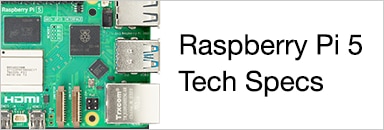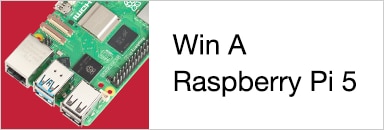We are always evaluating project platforms that may fit within BlueStamp Engineering's goals. Given the power, versatility, and growing user base, I am excited to check out the system as it may fit with what I think makes a great first project:
- Can a user get a response out of it within a few hours?
- Is there a solid community for ideas an support?
- Was I able to make a unique project without hating it too much?
- Are there lots of cool projects that can be completed?
To give it a go, I have a Model B (512MB) Raspberry Pi, an Adafruit budget pack, and an Adafruit Pi Proto Plate.
First, the fun part: Is it easy to see it alive & working?
Absolutely! I had the system running within an hour or so, thanks to Engaget's excellent getting started guide. The only hitch was having to use a cheap HDMI-to-DVI converter to connect my non-HDMI monitor.
Next, is there a decent community that would offer support and ideas?
Yes! When looking at a new platform, I look to answer two questions:
- What cool projects have other people completed?
- What headaches have other people faced, and how can I avoid them?
My main source of information was Element14's Rpi community, Raspberry Pi's forum, and Hack a day's project repositories.
Thanks to the forums, I was able to make a few decisions:
- Media Center PCs are quite popular, but no reasonable netflix, hulu, or amazon streaming setup makes it seem kind of useless nowadays :(.
- For wifi, I'll opt to use a $40 gaming bridge I have sitting around instead of a USB wifi dongle because of power concerns.
- Controlling and/or reading external I/O via the web isn't a huge deal.
Was I able to get it to do something more interesting without wanting to die?
Yes! I implemented a system that detected when my dog's kennel is closed and then produced a simple HTML webpage to show the kennel status and the amount of time that the dog has been in there. If I leave the dog in the kennel and my wife wants to know how quickly she should come home after work, she can check the kennel instead of texting her sometimes unavailable husband.
Writing the python script was easy enough, however I had problems when trying to get it running on the local network. After (a TON of) tinkering and experimentation with the system I found that I was using the wrong ip address. I posted the problem on a tutorial's forum, , and Raspberry Pi's forum, all resulting in a quick and informative response. With that working, all I had to do was setup port forwarding on my router and it was good to go. I've attached the python script and some notes on how I did it in case anyone is curious. I admit that the problems I fought were frustrating, but that's where all the valuable learning occurs!
Finally, did I get any big ideas while playing with it and reading about it online?
Yes, although not enough to give an emphatic 'YES!' I was able to find some more projects that were pretty well documented:
- Create a more significant web-controlled set of GPIO.
- Home automation projects would be really cool, and I already have a ton of X10 modules.
- I could even implement some of these control systems with my TI Chronos.
I also had some more unique ideas for after I've learned more about the system:
- Web-based doorbell system since I can NEVER hear my doorbell from my office.
- Web-based thermostat, perhaps with wireless temperature sensors
All in all, it's a great device, and I think a motivated student could do some great things with the platform. I don't think Pi will make as big of a splash as Arduino on account of the added complexity and limited peripherals. However one must bear in mind that the ultimate goal of the Pi is to get students programming on a solid platform at a very low cost, which it does quite well.
A special thanks to the folks at my local hackerspace, Denhac for hanging out and helping while I tinkered with the Pi!








